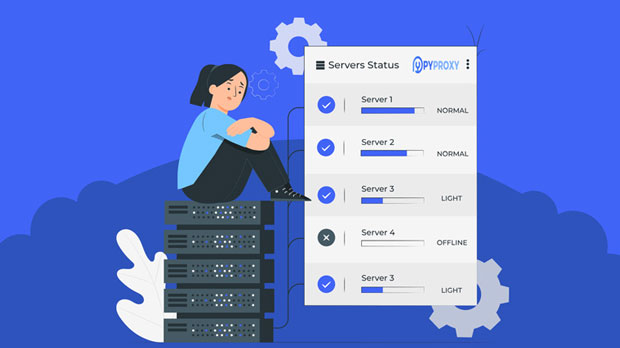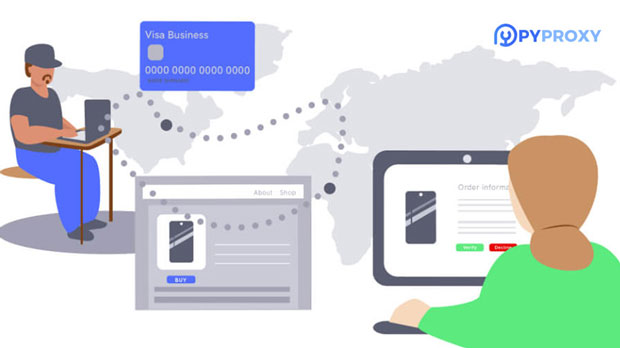As the demand for online privacy, security, and anonymity increases, web proxies have become essential tools for both businesses and individuals. Static ISP (Internet Service Provider) Web proxies are a particular type of proxy service that provides users with a fixed, unchanging IP address, which can be beneficial for web scraping, managing multiple accounts, or avoiding IP-based bans. For new users, many service providers, including those offering static ISP proxies, provide special offers or benefits, such as coupons or discounts. This article will explore whether new users using PYPROXY coupons to purchase static ISP Web proxies get any additional benefits, as well as the practical significance of these offers. Understanding Static ISP Web Proxies and Their BenefitsStatic ISP web proxies are designed to give users a fixed IP address from a specific Internet Service Provider. Unlike residential proxies, which use IP addresses from real household networks, static ISP proxies often come from data centers or network providers, providing a blend of stability and reliability without the frequent IP rotation that other types of proxies may offer. The key benefits of using static ISP proxies include:1. Consistency: Static ISP proxies ensure that the user’s IP address remains the same throughout the session, which is ideal for tasks requiring consistent identification, such as managing multiple accounts on platforms or accessing localized content.2. Fewer CAPTCHAs and Blocks: Because the IP address is stable and comes from a legitimate ISP, static ISP proxies are less likely to be flagged as suspicious by websites. This results in fewer CAPTCHAs or blocks, making browsing or web scraping much smoother.3. Higher Anonymity: These proxies offer a level of anonymity without the risk of revealing the user’s real IP address. It allows users to maintain privacy, especially when browsing sensitive content or conducting research.The Role of Coupons and Discounts in Proxy ServicesMany proxy service providers offer coupons and promotional discounts to attract new customers. These promotions serve as an incentive for first-time users to try out the service. A coupon can range from a percentage off the purchase price to free trial periods or additional features included in the service package. Coupons provide various advantages to new users:- Cost Savings: One of the most obvious benefits of using a coupon is the reduction in the cost of purchasing the proxy service. For new users, this makes it more affordable to experiment with the service, assess its performance, and decide if it meets their needs before committing to a long-term plan.- Value-Added Features: Some coupons may offer additional services, such as extra bandwidth, more concurrent connections, or access to specialized proxy servers like static ISP proxies. These added features can make the service more appealing without having to pay extra.- Risk-Free Testing: For first-time users, using a coupon allows them to test the service with reduced financial risk. They can assess the effectiveness and reliability of the proxies without a significant upfront investment.Extra Benefits for New Users Using PyProxy CouponsWhen considering whether new users receive additional benefits when using PyProxy coupons for static ISP Web proxies, it’s important to analyze the standard offerings from service providers. Most proxy providers understand that new users are likely to be hesitant about investing in a paid service right away, so they often include exclusive promotions for first-time customers.Here are some extra benefits new users might receive when using PyProxy coupons:1. Exclusive Discount Offers: New users who redeem a coupon can often enjoy a discounted price on their first purchase. This may include a percentage off the total cost or a fixed amount reduction, making it easier for them to try the service without a major financial commitment.2. Extended Trial Periods: In addition to discounts, some service providers may offer an extended trial period for new users who use the coupon. This allows them to test the static ISP proxies without a time limit or with a more generous testing window than standard plans.3. Additional Proxy Resources: Some coupons might also provide extra resources like additional IPs or bandwidth, especially when purchasing a higher-tier plan. This can enhance the user experience, particularly for those who require multiple proxies or higher data throughput for activities like web scraping or managing multiple accounts.4. Priority Support and Features: New users might also gain access to exclusive customer support services, including faster response times or dedicated account managers. Additionally, they may get access to features that are not available to standard users, such as advanced proxy rotation, higher IP quotas, or enhanced encryption.Why These Extra Benefits Matter to New UsersThe extra benefits that new users receive through coupons are significant in helping them make an informed decision. For many, the decision to invest in a proxy service is not taken lightly, as it often requires a financial commitment. By offering exclusive benefits such as discounts, additional resources, and extended trials, service providers like PyProxy ensure that new users have the opportunity to test the proxies at a lower cost and with less risk.These benefits also provide a more seamless and satisfying experience for the user. The added resources or extended trials give users the flexibility to explore all the features of the static ISP proxies, such as their stability, speed, and effectiveness in bypassing geo-restrictions or preventing blocks. This experience can help users decide if the service is suitable for their specific needs before they commit to a more expensive, long-term plan.Maximizing the Benefits of Coupons for New UsersTo make the most out of a PyProxy coupon, new users should carefully assess their needs before purchasing a static ISP web proxy plan. Here are some tips to maximize the advantages of a coupon:1. Evaluate Your Proxy Needs: Understand the type of tasks you’ll be using the proxies for. For example, if you’re performing web scraping or managing multiple accounts, choose a plan that offers sufficient bandwidth, concurrent connections, and stability.2. Choose the Right Coupon: Look for coupons that offer not just discounts, but also value-added features such as extra bandwidth, additional IPs, or longer trial periods. This will allow you to enjoy a more enhanced experience while testing out the service.3. Test the Service During the Trial Period: Take full advantage of the trial period offered with the coupon. Test out various features of the static ISP proxies to understand their effectiveness and reliability, ensuring the service meets your needs before you commit to a full plan.4. Monitor the Service’s Performance: During the trial or discounted period, monitor the proxy service’s performance, including speed, uptime, and ability to bypass restrictions. This will give you an idea of whether the service will suit your long-term needs.For new users interested in purchasing static ISP Web proxies, using a PyProxy coupon can indeed provide significant extra benefits. These benefits may include discounts, extended trial periods, additional resources, and exclusive support. By utilizing these offers, new users can reduce their initial investment risk, test the service thoroughly, and make a more informed decision regarding their long-term proxy needs. For anyone exploring the world of proxies, these extra benefits represent a valuable opportunity to experience high-quality services at a reduced cost, ensuring a smoother and more successful online experience.
May 15, 2025


































































